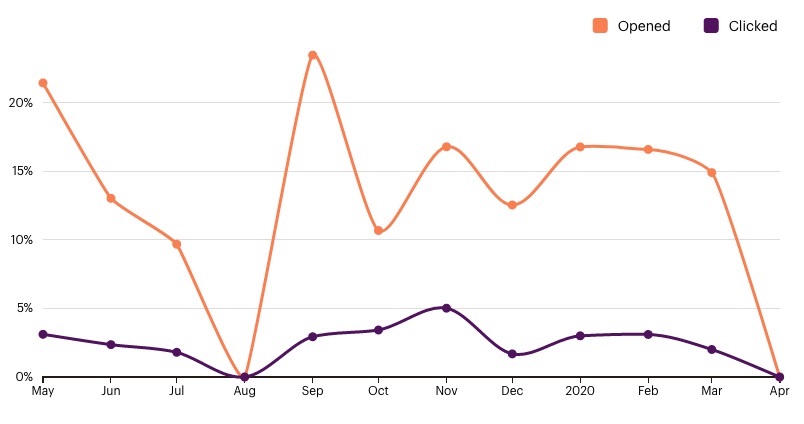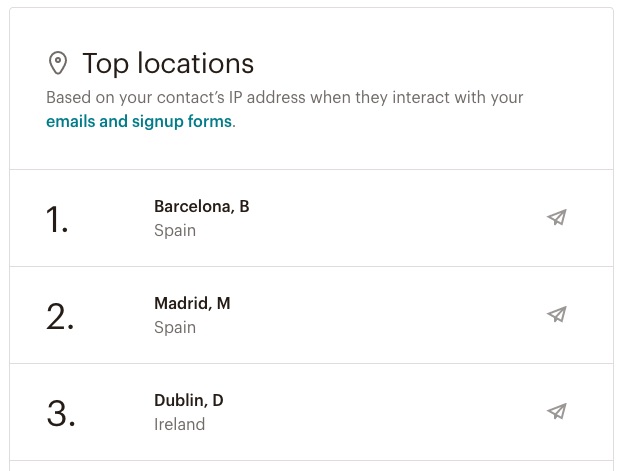Growing our brand: the MarsBased newsletter
Captain's log, stardate d657.y38/AB

The company turned six, only two months ago. However, we didn't start the newsletter until early 2018 because we are still a small company and couldn't do everything and do it right. So after closing a couple of other internal projects, and getting positive feedback from our audience as to whether they would read a newsletter, we decided to give it a go.
Let's take a look at the data, first!
In our first year, we grew the newsletter to 500 subscribers while on this one, we've obtained 300 subscribers. Growth, however, hasn't been one of the KPIs we've prioritised. Instead, we've focused on getting the best content we could for every newsletter issue.
Our newsletter reflects our philosophy: no ads, no shortcuts, no growth-hacking and well-aligned to the values of giving before taking and being helpful to the community before anything else.
We are the only ones caring about the metrics, and most of the times, not even that. We don't report to investors or external shareholders, so we don't feel forced to meet arbitrary goals.
Since April 2018, we've sent 34 newsletters. The whole 2018 had just one issue per month while during 2019 and 2020 we're doing twice per month: one "update" issue on the first Tuesday of each month with what's coming up next in the company and a recap of the previous weeks, and a second one with a compendium of content on one specific topic.
So far, we've explored topics such as Node.js and Ruby on Rails for the technical audience out there, a few issues on remote and a few others about company culture, just off the top of my head.
Let's check the stats. I first broke the data down in three data sets:
As you can see, we will be comparing data that's different in nature, but I thought it'd be interesting to see 2018 as only with an issue per month, 2019 as the year with two issues, and 2020 as an atypical year because of a global pandemic AND two issues per month.
I will also compare this to 1st year vs. 2nd year.
Currently, our overall open rate sits at 23.12%. When we were doing once per month, the open rate was 30,78%, so clearly we are not doing something right. Or are we?
Let's take a look at further detail!
These are the results:
In 2019 our open rate dropped, probably due to the increase of the frequency. We too see a big drop this year, but it wouldn't be very farfetched to assume COVID-19 has had some kind of influence there.
When comparing year one versus year two, these are the results:
Again, a drop, but not as big as between 31% and 16%.
Whereas the open rate has suffered a significant decrease over the two years, the CTR not so much (acknowledging the current circumstances). This, to me, is more meaningful: we'd rather optimise for people to click on the content than actually opening the newsletter. More on this later on.
And now, comparing the first year to the second year:
Here we find a slight decrease in CTR as well, when comparing the first year (1x month) vs the second year (2x month). Even though it's not 100% accurate, we can round it up like this for the sake of simplicity.

There are three things we should be calculating, but we haven't set them up as a proper priority.
First, how many business leads do we get out of the newsletter. During the first year, we didn't get many, and they were of really low quality. 2019 brought a few more and a couple of really good ones. This year, we have yet to see any, but we understand that companies are not into buying mode.
However, as stated above, this is not our first concern nor the reason why we have a newsletter, but it would help to justify a descent of the open rate if the leads per issue were significant. I'd be happy to have it.
Second, the quality of the subscriber has increased significantly. Whereas the first year it was mostly our friends and family (and maybe some fools?) signing up, last year and this year we've seen people of higher profiles subscribing. We've got high ranks in corporates, founders and C-levels of notorious startups and partners of big European VCs.
I honestly have no idea of how to calculate this and make it a metric, other than checking it manually regularly as I nowadays do, but it's something I'd like to work on, as this will undoubtedly yield good outcomes in the months and years to come.
Third, we don't know how many candidates have known us through the newsletter. If, say, every year we signed one or two people thanks to the newsletter, it'd be also a stellar metric. For now, we know that there is a strong correlation between the best candidates and them being subscribed to the newsletter and following our blog and social media, so that's all I can say in this regard.


I've broken down the data of the first issue of the month (update) vs. second issue (specific topics) and this is the data:
While the second issues seem to generate interest to fewer people - slightly - they provide better metrics as per the CTR. However, the differences are not substantial enough.
With this data, and taking into consideration that 1. we're not marketers and 2. the newsletter isn't at the top of our priorities, what we can take away of all of this is the following:
Yes. Definitely, it is.
Although we are not getting a lot of dealflow from the newsletter, we've gotten a few deals so far which make it worth our while.
That being said, we figured somewhere along the road that dealflow isn't what we expect to get out of a newsletter. We are more interested in building a loyal audience. We want to update our fans and friends alike with well-timed and high-quality content.
For a company working almost exclusively through recommendation, we need to be top of the mind for our immediate circles, and we're accomplishing it by appearing on their inboxes twice per month, and being active in social media, events and other sorts of digital presence opportunities.
Thanks to our newsletter we are getting more referrals by potential clients, more candidates to fill our openings and we're building a loyal fanbase, who will back us in whatever project we start.
One quick example of a good thing we got out of our newsletter: last year, we sent a newsletter aimed at corporates. We had been talking to a lot of them in a short amount of time, so we decided to test the waters.
We put together a few articles, some written by us some not, for people working in big multinationals, and some articles with industry insights and it worked. We got a few good reactions, and a contact from the Catalan government inviting us to take part in a project to promote Corporate Venturing. Later on, that would become our event Corporate Innovation Summit, which turned out to be a resounding success for everyone.
We are not a company of making grandiose plans for the future. We work on the short- and mid-term by defining thought-through goals aligned with our values, and thus, growth for the sake of growth, is not one of them.
We will stick to our agenda of sending one or two newsletters per month to communicate our updates, our best blog posts and things we find interesting, but there are no grand plans for our newsletter so far. It seems we're on the right track, and we'd rather experiment somewhere else than alter something already working and performing well.

For over a year, no one was in charge of Startup Digest in Barcelona. Here's why we decided to stand up to the challenge.
Read full article
Announcing our new corporate logos, slogan, the Spanish version of the site and our newsletter.
Read full article
After a year of sending our monthly newsletter, it's time to review how it's been and reflect on what we've done right and wrong.
Read full article